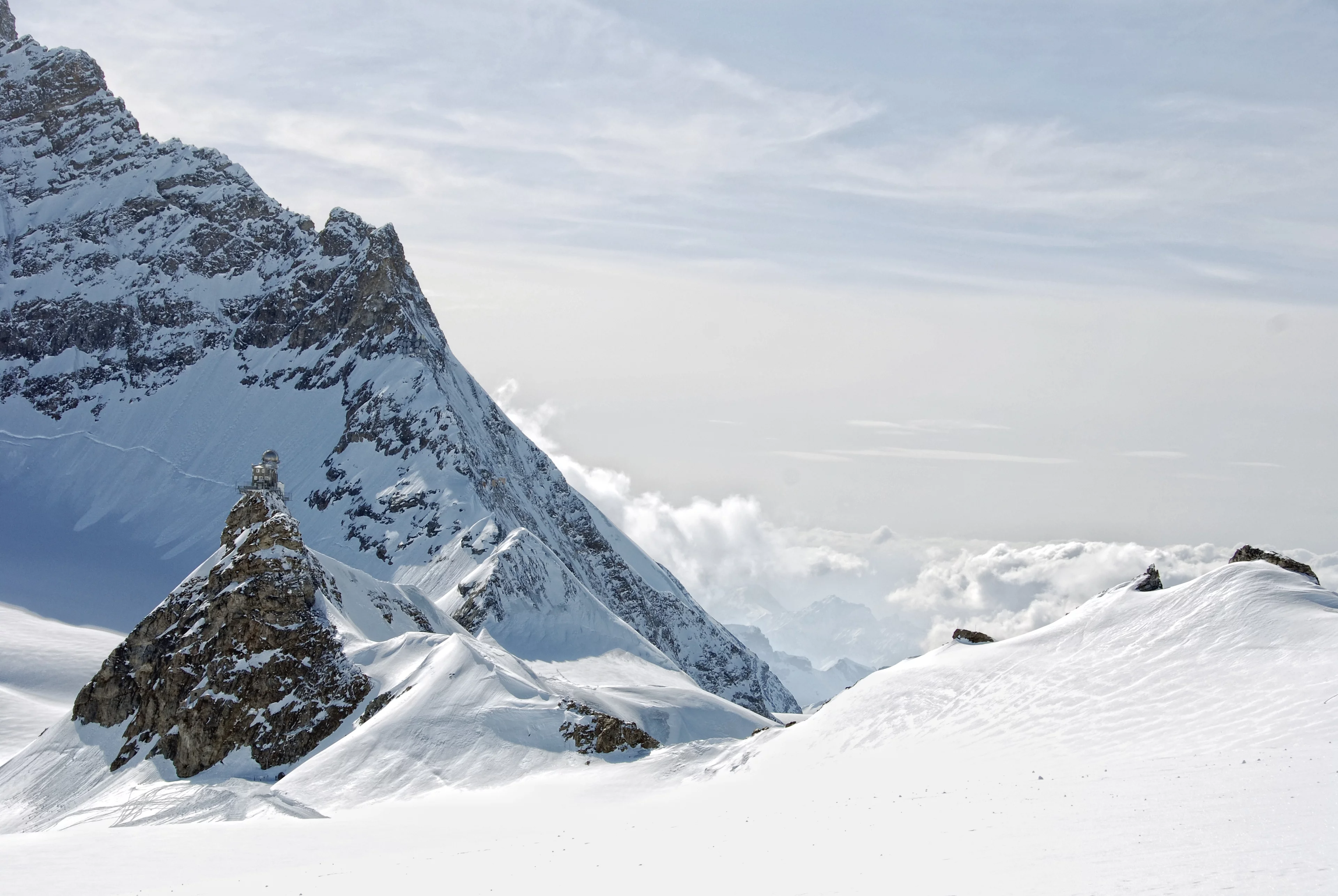Data of the Paul Scherrer Institute from the High-Alpine Research Station Jungfraujoch yield important information.
The eruption of the volcano Eyjafjallajokull in Iceland has stalled flight traffic in large regions of Europe. Decision makers had to base their decisions mainly on model calculations for the volcanic plume dispersion. How dangerous is this volcanic ash layer for planes? To estimate the damaging potential, one has to know the mass concentration of the volcanic ash directly in the air. This parameter is, however, difficult to estimate. There are many instruments that measure aerosol mass concentrations continuously, but they are typically designed for ground based use. Thus they cannot be used to track the volcanic ash plume, which is moving some kilometres above ground level. On the other hand there are so-called Lidar instruments (Light detection and ranging). Lidars are operated on the ground but are able to measure vertical profiles of the optical properties of aerosol particles and thus also of volcanic ash. In the best case they deliver extinction coefficients. These coefficients describe the attenuation of a light beam on passing through an atmospheric layer. Most Lidars in Europe have been operated continuously during the last few days and were able to track the altitude of the volcanic ash layer. Mass concentrations can, however, not be directly retrieved from these measurements.
For more than 15 years the Paul Scherrer Institute has conducted continuous aerosol measurements at the Jungfraujoch (3580 meters above sea level) in the Swiss Alps. These measurements are part of the Global Atmosphere Watch (GAW) programme of the World Meteorological Organization (WMO), which has the goal of investigating the effects of aerosol particles on climate. A broad variety of relevant aerosol properties are continuously monitored. These include the extinction coefficient mentioned above, as well as the aerosol size distribution, the total number of particles and the number of particles that are able to form cloud droplets. The mass concentration of fine particles is simultaneously measured by the Swiss Federal Laboratories for Material Testing and Research (Empa) within the National Air Pollution Monitoring Network (NABEL).
Since the volcanic ash has been shown to form only a thin layer, it is unlikely that the measurements at the Jungfraujoch will capture the maximum plume concentration of the ash. However, the combination of the collected data at the Jungfraujoch allows the relationship between the mass concentration of the volcanic ash and its extinction coefficient to be determined. With this information, Lidar data can be converted into vertical profiles for mass concentrations, assuming similar size distributions. In addition, the Swiss company Metair, using a motor glider, has measured the concentration of the larger particle fraction within the plume over Switzerland. These data can be converted into mass concentrations, using the Jungfraujoch measurements, in a similar way. This helps to obtain an overview of the spatial distribution of the mass concentrations caused by the volcanic ash.
Contact
Prof. Dr. Urs Baltensperger
Laboratory of Atmospheric Chemistry
Paul Scherrer Institute PSI
+41 56 310 24 08
urs.baltensperger@psi.ch
[german, english]
About PSI
The Paul Scherrer Institute PSI develops, builds and operates large, complex research facilities and makes them available to the national and international research community. The institute's own key research priorities are in the fields of future technologies, energy and climate, health innovation and fundamentals of nature. PSI is committed to the training of future generations. Therefore about one quarter of our staff are post-docs, post-graduates or apprentices. Altogether PSI employs 2300 people, thus being the largest research institute in Switzerland. The annual budget amounts to approximately CHF 450 million. PSI is part of the ETH Domain, with the other members being the two Swiss Federal Institutes of Technology, ETH Zurich and EPFL Lausanne, as well as Eawag (Swiss Federal Institute of Aquatic Science and Technology), Empa (Swiss Federal Laboratories for Materials Science and Technology) and WSL (Swiss Federal Institute for Forest, Snow and Landscape Research). (Last updated in June 2025)




